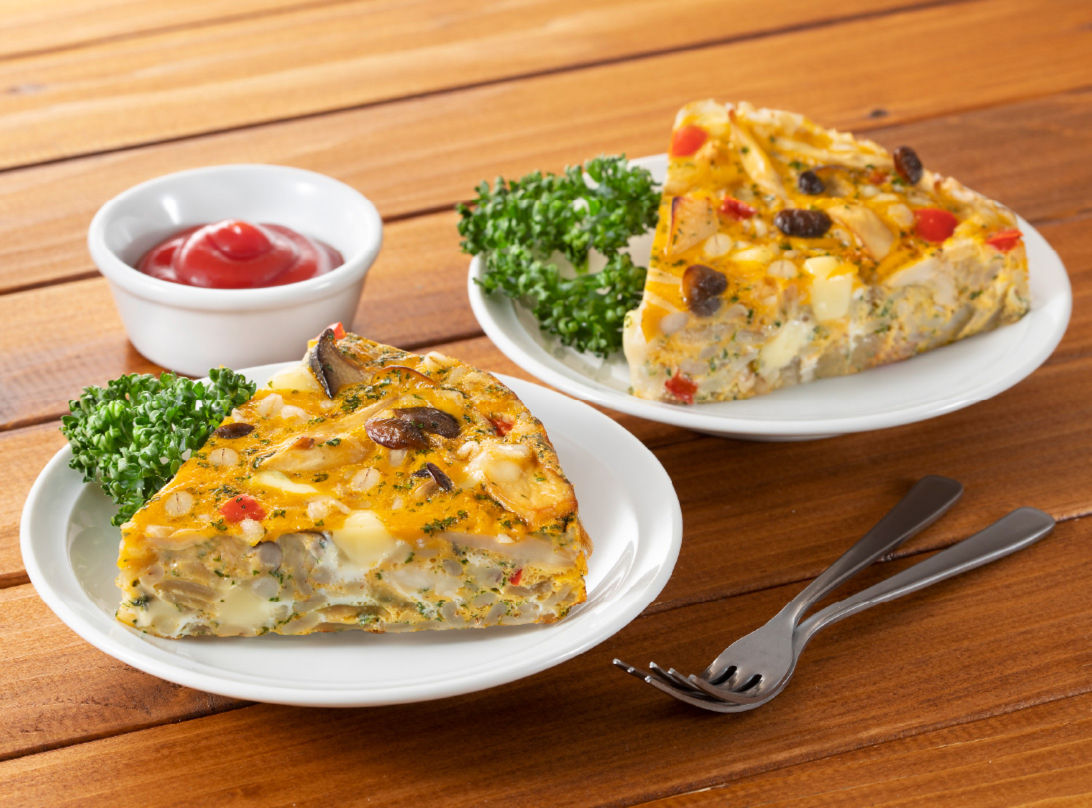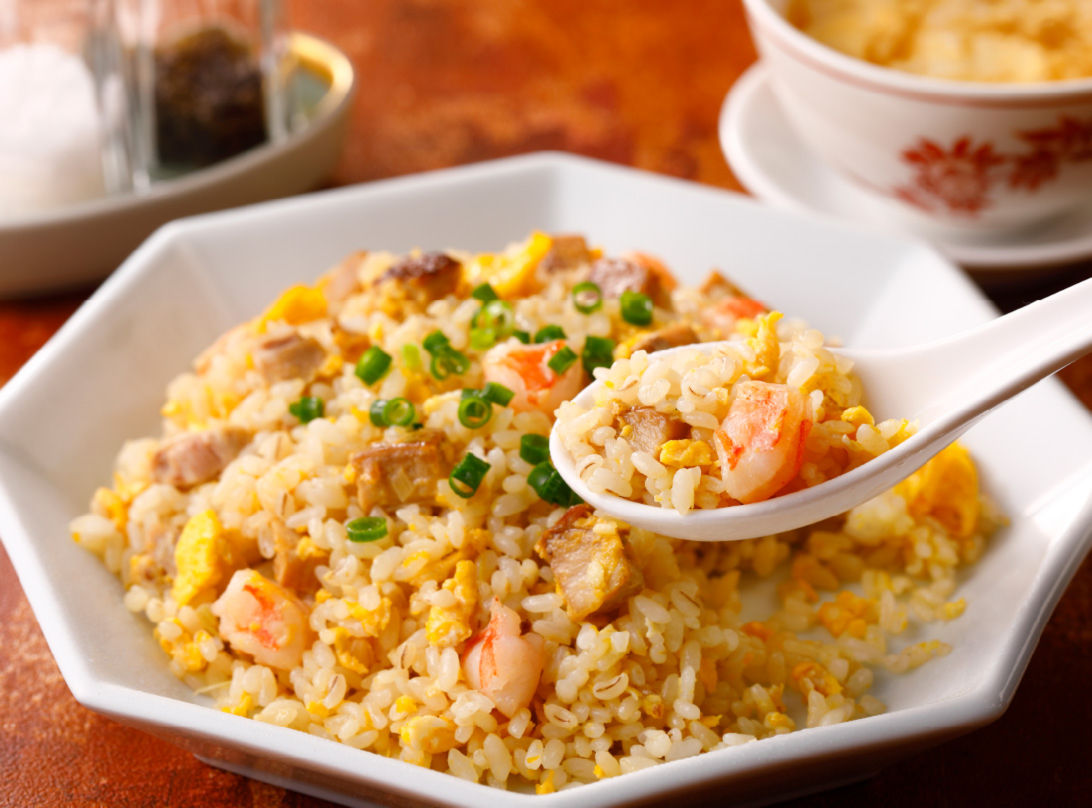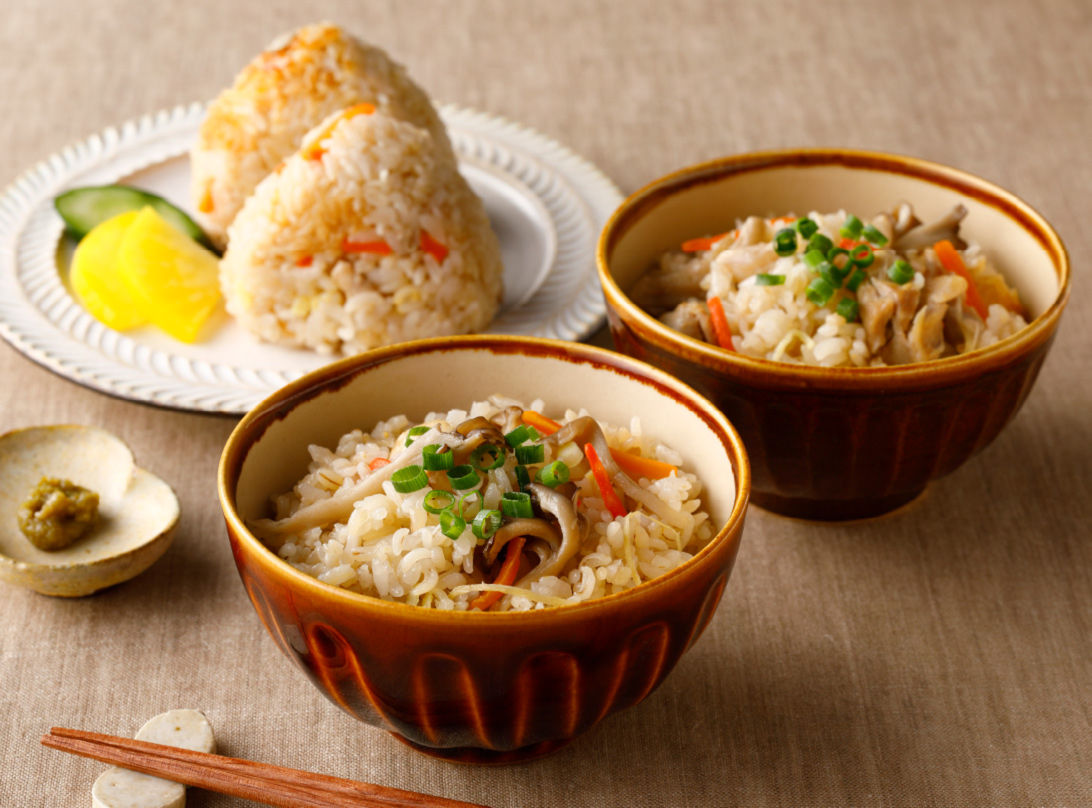Different Types of Barley
-Non-Glutinous Barley-
What is Non-Glutinous Barley?
Barley is one of the oldest grains in the world and is widely used in products like beer, whiskey, miso, and barley tea. Similar to rice, which is categorized into “non-glutinous” and “glutinous” types, barley also comes in “non-glutinous” and “glutinous” varieties, with further classifications into “Two-rows” and “Six-rows” types. Non-Glutinous barley is the general term for barley with “non-glutinous” properties. Unlike Glutinous barley, which contains a high amount of amylopectin that gives it a chewy texture, Non-Glutinous barley contains very little amylopectin, resulting in a light, smooth texture.


Non-Glutinous barley offers a rich variety of appearances and textures due to different processing methods. These processing techniques are tailored to enhance texture, simplify cooking, or improve appearance, depending on the intended purpose. Let me introduce you to the various types of Non-Glutinous barley that differ based on their processing methods.
Different Types of Non-Glutinous Barley Based on Processing Methods
Non-Glutinous Barley Processing Steps
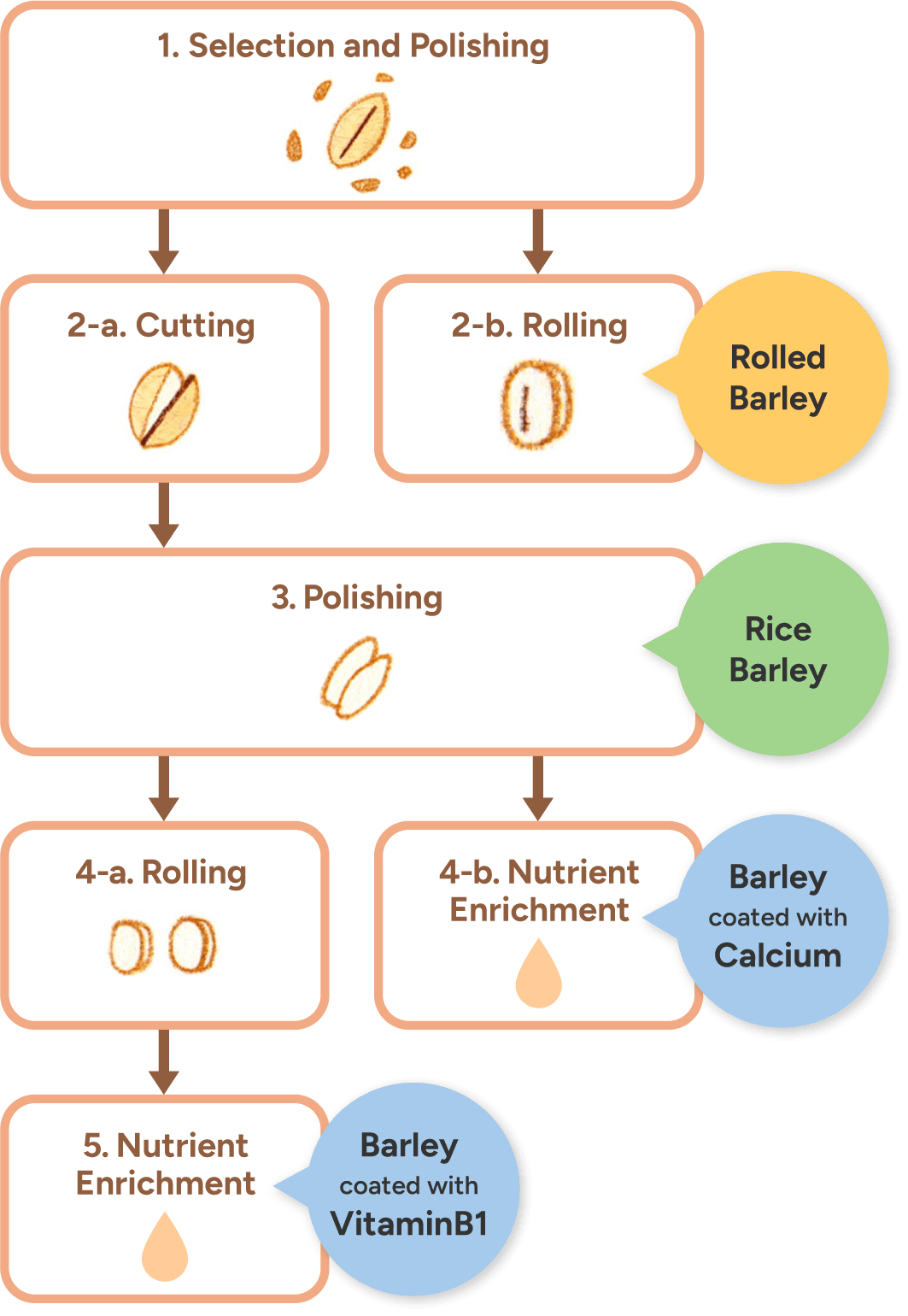
- 1. Selection and Polishing
- After harvesting, small or lightweight barley grains are removed. The grains then undergo polishing, where rotating grindstones remove the outer husk and bran.
- 2-a. Cutting
- Cut the wheat grain in two with a cutter along the black stripe line in the center of the grain.
- 2-b. Rolling
- The grains are flattened using rolls to create a thin, even texture.
- 3. Polishing
- Polish the surface further using a grindstone. After this, the Rice Barley undergo steaming, cooling, and drying. They are then polished to the same size as rice grains.
- 4-a. Rolling
- The grains are flattened using rolls to create a thin, even texture.
- 4-b. Nutrient Enrichment
- Coat the barley with calcium to enhance its nutritional value.
- 5. Nutrient Enrichment
- Coat the barley with VitaminB1 to enhance its nutritional value.
Barley Products to Suit Your Preferences
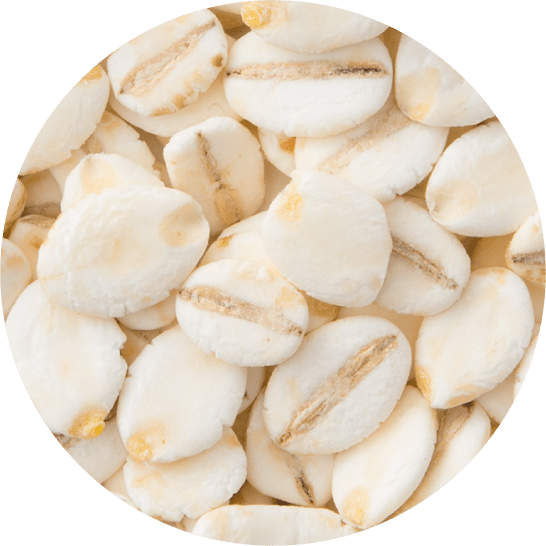
Rolled Barley
These are the most standard types of Non-Glutinous barley. The outer husk is removed, and the grains are steamed and then flattened while keeping the dark crease in the center of the grain intact. This process makes them easy to cook with rice. The thin and flat processing provides an easy-to-eat texture that is light and simple.
Rolled Barley (Embryo Bud Left) retains the embryo, which is rich in vitamin E and unsaturated fatty acids, resulting in a nutritious option.
We use 100% Japanese-grown barley as the ingredient for these products.
Products
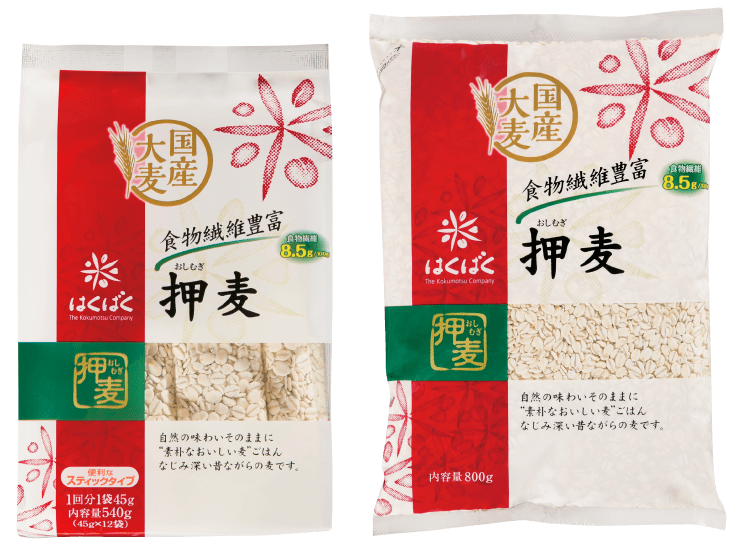
Rolled Barley
Basic Product Information
| Net Weight | 45g×12sticks, 800g |
|---|---|
| Ingredients | Barley |
| Best Before | 360days |
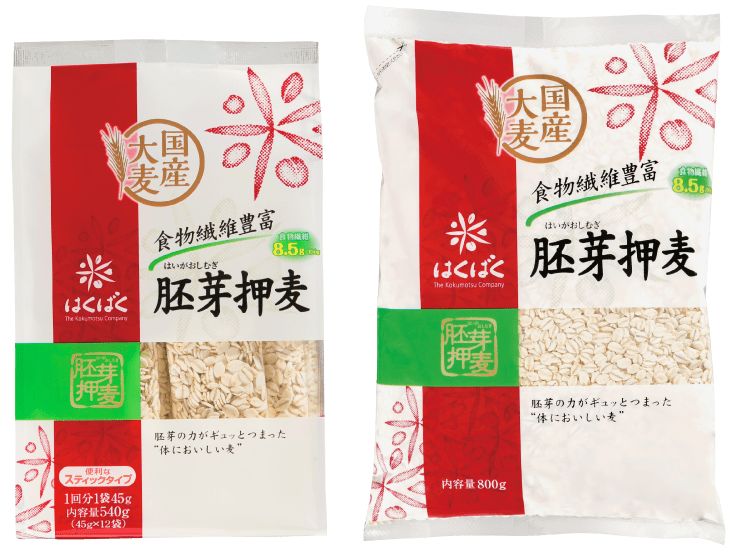
Rolled Barley
(Embryo Bud Left)
Basic Product Information
| Net Weight | 45g×12sticks, 800g |
|---|---|
| Ingredients | Barley |
| Best Before | 360days |
Recommended Dishes
Due to the flattened processing, this barley is characterized by good heat conduction and excellent water absorption. Its light texture pairs well with rich, fatty meat dishes. Additionally, when simmered in soups, it retains its shape well, offering an easy-to-eat texture that complements and enhances your meals.
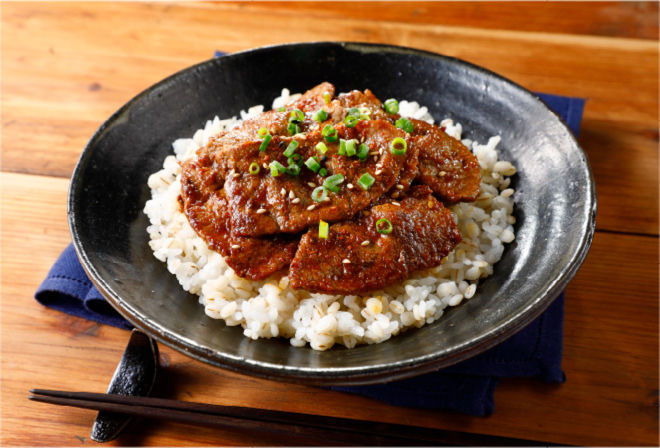 Meat bowl
Meat bowl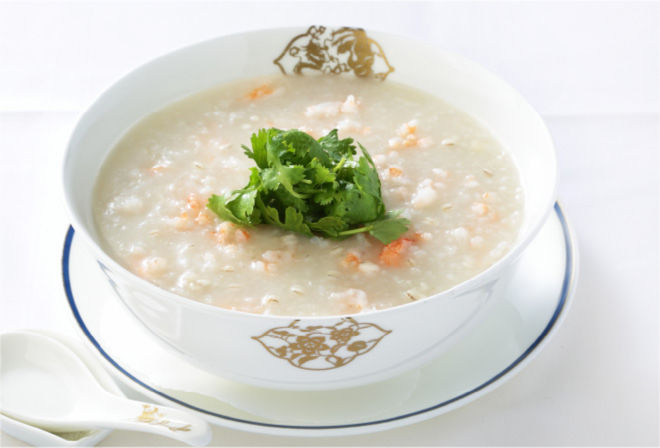 Rice porridge
Rice porridge
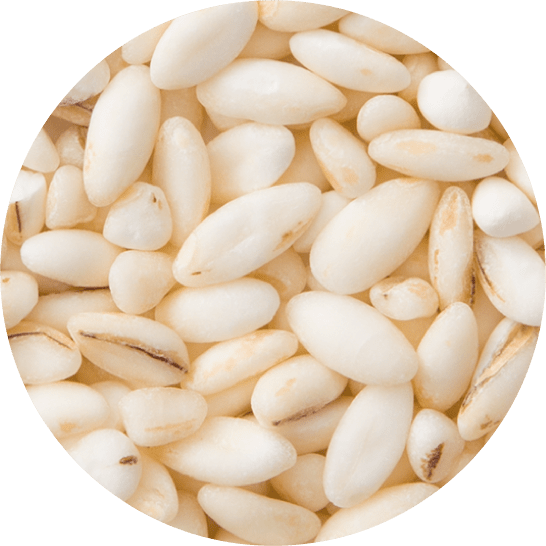
Rice Barley
This barley is processed to remove the dark crease in the center, giving it a shape that resembles rice. With its slightly firm texture, it mixes well with rice without feeling out of place, allowing you to easily add dietary fiber to your meals.
We use 100% Japanese-grown barley for this product.
Products
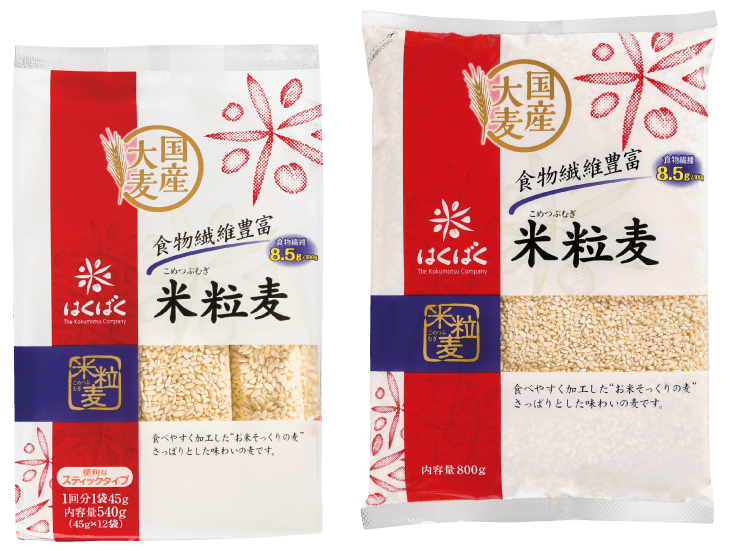
Rice Barley
(Rice-shaped Barley)
Basic Product Information
| Net Weight | 45g×12sticks, 800g |
|---|---|
| Ingredients | Barley |
| Best Before | 360days |
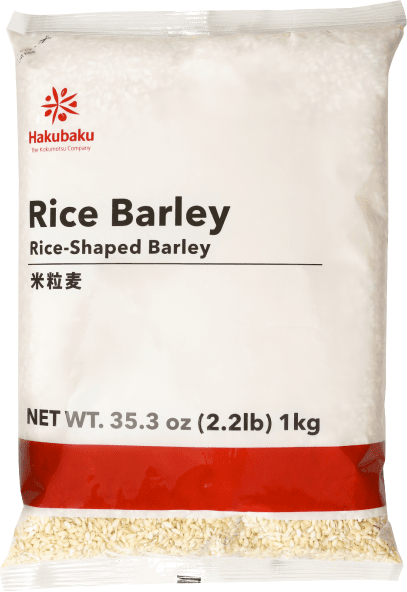
For Professional Use
Rice Barley 1kg
(Rice-shaped Barley 1kg)
Basic Product Information
| Net Weight | 1㎏ (12 per Case) |
|---|---|
| Ingredients | Barley |
| Best Before | 360days |
Recommended Dishes
This barley is known for its distinct, separate grains and a slightly firm texture. Resembling the appearance of rice, it can be mixed with rice or used as a substitute in rice dishes. It absorbs flavors well and remains non-sticky, making it ideal for seasoned rice recipes.
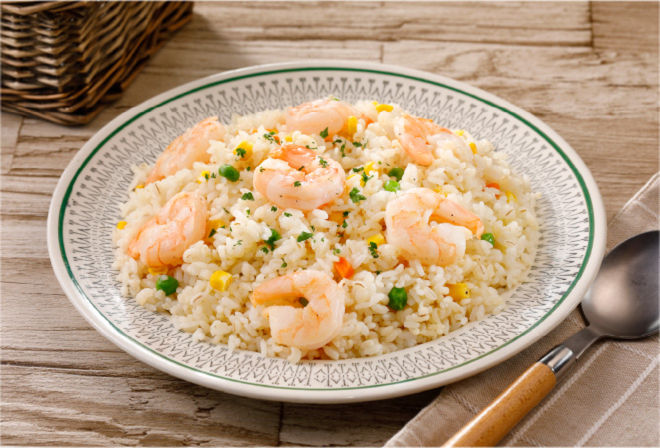 Pilaf
Pilaf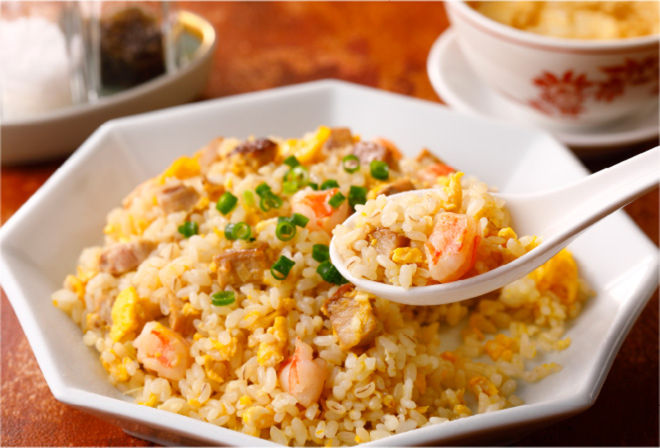 Fried rice
Fried rice
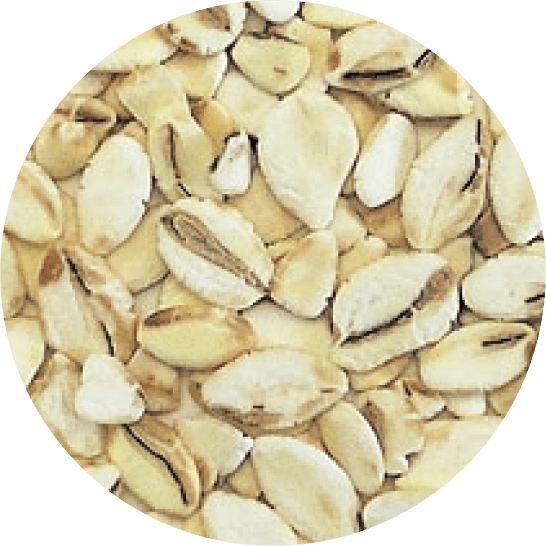
Barley coated with VitaminB1
This barley is meticulously processed by slicing the grains in half along the dark crease in the center and then flattening them. This process is followed by fortifying the barley with additional Vitamin B1, enhancing its nutritional value.
The resulting barley is half the size of typical rolled barley, making it soft and easy to eat. It is an excellent choice for those who wish to conveniently boost their nutrition through their staple diet.
We use 100% Japanese-grown barley for this product.
Products
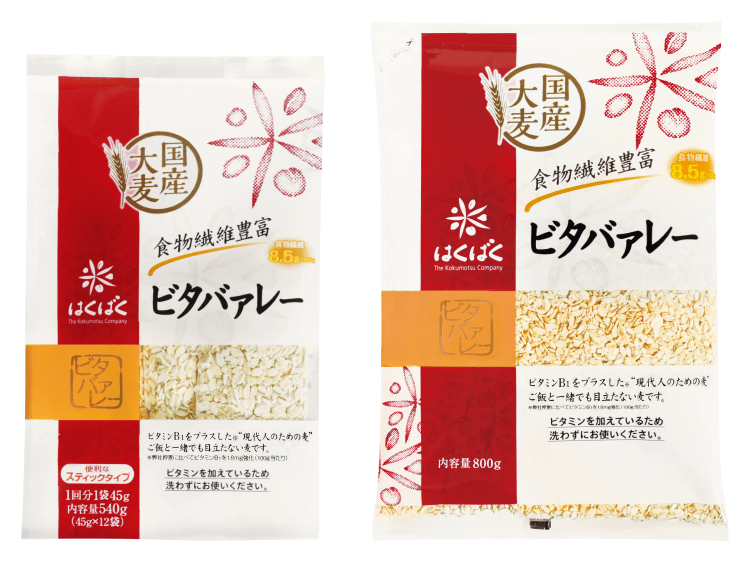
Barley coated with VitaminB1
Basic Product Information
| Net Weight | 45g×12sticks, 800g |
|---|---|
| Ingredients | Barley, Vitamin B1, VitaminB2 (color) |
| Best Before | 360days |
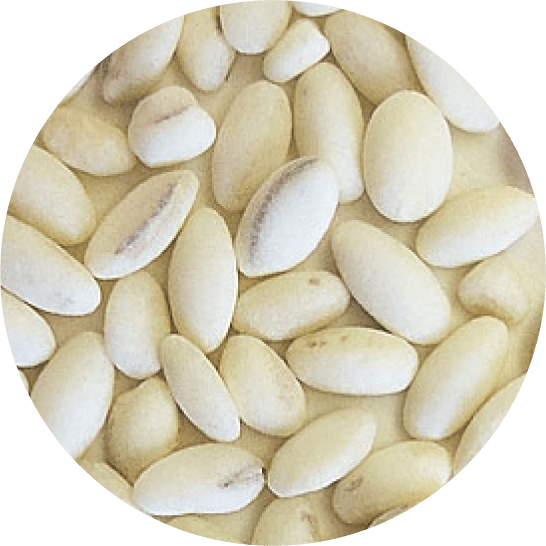
Barley coated with Calcium
This barley has been processed to resemble the shape of rice and is enriched with additional calcium to enhance its nutritional value. It’s an easy way to supplement your daily calcium needs through your staple diet. This product is recommended for a wide range of consumers, from young children to the elderly.
It can be consumed just like rice.
We use 100% Japanese-grown barley for this product.
Products
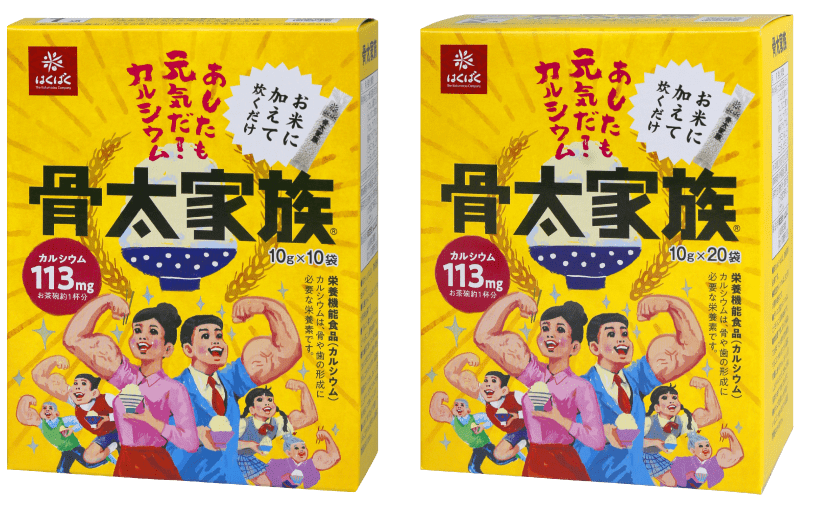
Barley coated with Calcium
Basic Product Information
| Net Weight | 10g×10sticks, 10g×20sticks |
|---|---|
| Ingredients | Barley, Shell calcium, Calcium lactate, Calcium gluconate, Niacin, Gum arabic, Vitamin B6, Vitamin B1, Vitamin D |
| Best Before | 360days |
*This product is considered a “Functional Food” in Japan, specifically designed for nutritional support with added calcium.
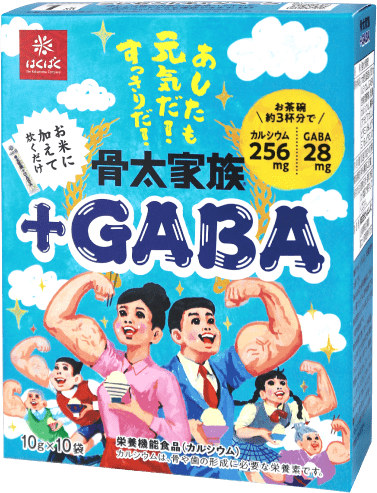
Barley coated with Calcium & GABA
Basic Product Information
| Net Weight | 10g×10sticks |
|---|---|
| Ingredients | Barley, Shell calcium, Fermented liquid containing GABA, Calcium lactate, Gum arabic, Vitamin B6, Vitamin B1, Vitamin D |
| Best Before | 360days |
*This barley has been processed to resemble the shape of rice and is fortified with calcium and GABA for enhanced nutrition.
*This product is considered a “Functional Food” in Japan, specifically designed for nutritional support with added calcium.
Recipe
How to Cook Barley Rice
Items Needed ( Makes 5~6 bowl of rice )
2 cups rice and usual amount of water
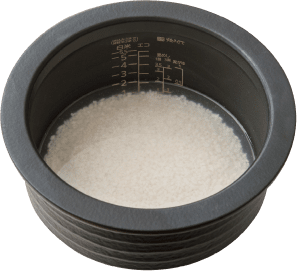
50g (1.76 oz) Barley
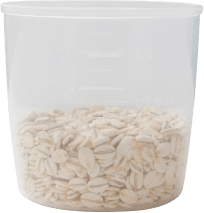
Additional 100 ml water (twice the weight of barley)

Method
-
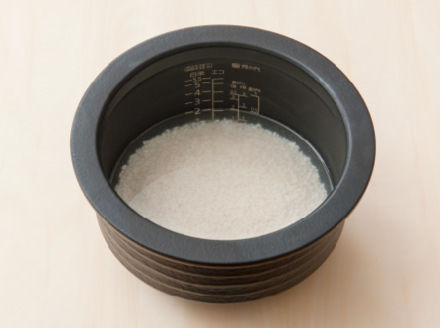
Rinse the rice thoroughly and add water according to the usual measurement on your rice cooker’s scale.
-
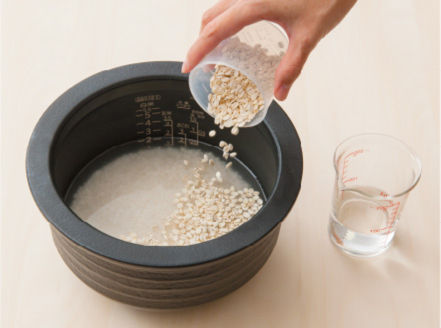
Add the barley and additional water.
-
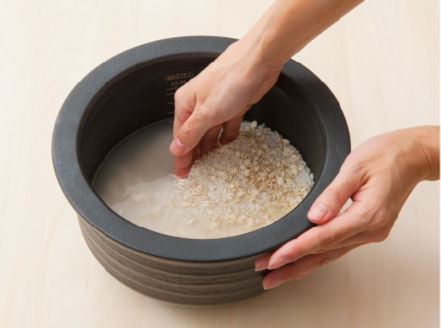
Stir gently and let it soak for about 30 minutes before starting the cooking process.
-
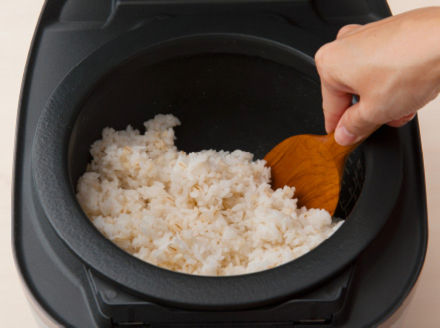
Once cooked, mix the rice thoroughly.
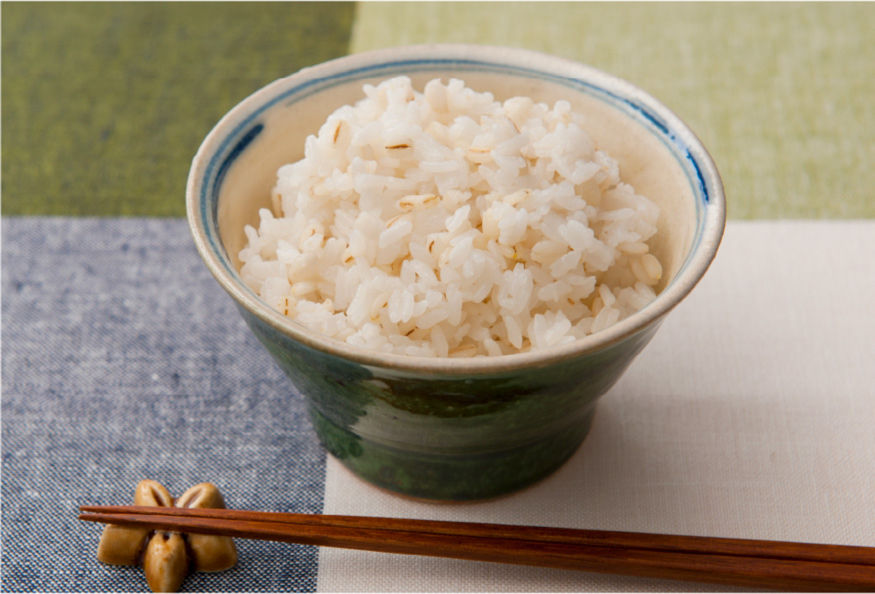
Point
- If you adjust the amount of barley, please add additional water that is twice the weight of the barley.
- There is no need to rinse the barley.
- Cooking is possible without soaking time, but it may result in a slightly firmer texture. Soaking helps the barley achieve a soft texture.

Rolled Barley and Mushroom Frittata
*Recommended Type of Barley: Rolled Barley
( Cooking time : 15 min ) excluding waiting time
Ingredients ( For 6 serving )
- 1 tablespoon Olive oil
- 1/2 Onion (cut into small cubes)
- 1/2 Red bell pepper (cut into small cubes)
- 2.8 oz (80g) Shimeji mushrooms (separate into smaller pieces)
- 2.8 oz (80g) King oyster mushrooms (thinly sliced)
- 4.2 oz (120g) Rolled Barley
- 2.1 oz (60g) Processed cheese (cut into small cubes)
- 4 Eggs (beaten)
- 0.4 oz (10g) Parsley (chopped)
- 2 tablespoons Consomme (granulated)
- Salt and Pepper (to taste)
- Parsley (for garnish)
- Tomato ketchup (to taste)
Method
- Heat olive oil and sauté the ingredients marked as (A). Drain the excess liquid and place them in a bowl.
- Add the ingredients marked as (B), mix well, and pour into a mold lined with parchment paper.
- Bake in a 200 ℃ (about 400 ℉) oven for 20 to 25 minutes. Remove from the mold, let it cool slightly, and cut into six equal pieces.
- Arrange the pieces in a serving dish, garnish with the ingredients labeled as (C), and your dish is ready to serve.

Rice Barley Fried Rice
*Recommended Type of Barley: Rice Barley
( Cooking time : 10 min ) excluding rice cooking time
Ingredients ( For 2 serving )
- 14.1 oz (400g) Rice with Rice Barley (cooked)
- 2 Eggs (scrambled)
- 1.4 oz (40g) Roast pork (cut into cubes)
- 1 oz (30g) Shrimp
- 0.4oz (12g) Fried rice seasoning pastes
- 1 tablespoon Vegetable oil
- Green onion (chopped, to taste)
Method
- Sauté the ingredients labeled as (A) in vegetable oil until they are well-separated. Then add the fried rice seasonings to enhance the flavor.
- Finally, add the chopped green onions and turn off the heat. Once plated, your dish is ready to serve.

Nutritious Takikomi-Gohan
(Seasoned Steamed Rice)
*Recommended Type of Barley: Barley coated with Calcium
( Cooking time : 15 min ) excluding rice cooking time
Ingredients ( For 4 serving )
- 3.5 oz (100g) Barley coated with Calcium
- 2 cups Rice
- 5.3 oz (150g) Chicken thigh (cut into bite-sized pieces)
- 0.7 oz (20g) Carrot (shredded)
- 0.2 oz (5g) Ginger (shredded)
- 1.8 oz (50g) Maitake mushroom (separate into smaller pieces)
- 1 tablespoon Soy sauce
- 1 tablespoon Cooking sake
- 1 tablespoon Mirin
- 1 teaspoon sugar
- Green onion (chopped, to taste)
- Yuzu kosho (to taste)
Method
- Rinse the rice and let it drain in a strainer for about 30 minutes.
- Put the drained rice from step 1 and the ingredients labeled as (A) into a rice cooker. Add water according to the rice cooker’s measurement. Then add Barley coated with Calcium and 200ml of water. Gently stir, add the remaining ingredients, and start cooking.
- Once cooked, serve in bowls. Garnish with chopped green onions and serve with yuzu pepper, if desired. Your dish is now ready to enjoy.
Hakubakuʼs Commitment to Quality
Comprehensive Quality Checks for Your Peace of Mind
For every batch we procure, we conduct extensive testing for residual pesticides on approximately 400 items. Additionally, we verify that the moisture content meets our high standards and check for any foreign substances. Only materials that pass all these rigorous tests are deemed fit for use.

Thorough Removal of Foreign Substances Using Multiple Sorting Machines
The raw materials delivered to our factory often contain various foreign objects, such as barley stems and leaves, other crops from nearby fields, and small stones. Removing these impurities is a complex task. We employ a combination of machines: lighter objects are removed with air blowers, and items of different sizes are sorted using sieves.
Barley Polishing Process “Tōsei,”
Adjusted to 0.01mm Precision
The process of polishing barley with grinding stones is known as “tōsei.” To prevent the barley grains from breaking, we gradually remove the outer husk through several stages rather than all at once. We adjust the polishing settings with 0.01mm precision to ensure the grains are uniformly polished, resulting in consistent cooking quality.
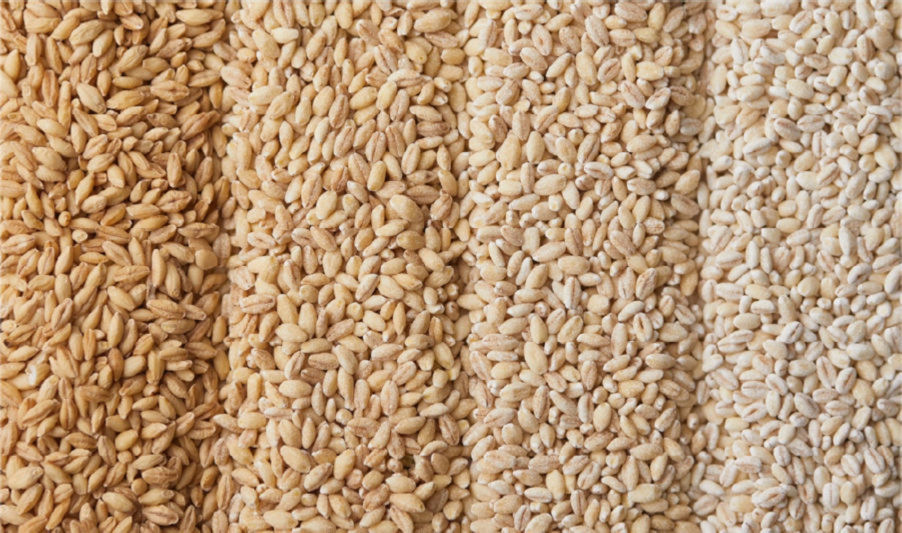
Please contact us.
Please feel free to contact us at the
e-mail address below to request a quote or other information.
Our representative will reply to you within a few days.
We look forward to hearing from you about your OEM needs.
contact@hakubaku.com

